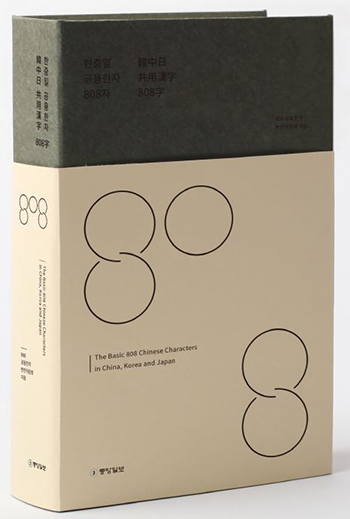
The three biggest Northeast Asian languages have shared a Chinese writing system for many centuries, and each has modified and developed its own way of using Chinese characters. The same Chinese characters sometimes have different meanings in the other languages, while some characters are used only in one particular language. To narrow the differences and communication gap between Korean, Japanese and modern simplified Chinese, the Northeast Asia Trilateral Forum recently published a book to explain the most commonly-used 808 characters.
Though these 808 characters are logograms that all three languages can read and understand, each character's meaning may be different in each language. The recently published "Basic 808 Chinese Characters in China, Korea and Japan" shows one way to learn and understand each language's way of reading and writing traditional Chinese characters by examining the "basic" characters found across the three languages.
Lee O-young, former Korean culture minister, writes in the foreword that, "Korean and Japanese both write 'automobile' with the same three Chinese characters (自動車). However, modern simplified Chinese writing has a different word for 'automobile', pronounced qiche (氣車) in Mandarin. A three-character word that is read 'daejangbu' in Korean and 'dazhangfu' in Mandarin means a 'strong and solid man,' while the same word means 'no worries' in Japanese. Sharing the physically-same characters themselves can sometimes generate bigger misunderstandings and confusion between the three languages."
The Northeast Asia Trilateral Forum, the organization that chose the 808 characters explained in this book, is an annual forum jointly run by Korea's JoongAng Ilbo daily, alongside China's Xinhua News Agency and Japan's Nikkei news group. Its purpose is to promote trilateral cooperation in Northeast Asia for the future.
At the forum's fifth meeting in 2010 in Nara, Japan, it first discussed the necessity of using the same Chinese characters in all three languages. In the meeting in 2012 in Seoul, 500 Chinese characters were chosen, and that number increased to 800 characters during the 2013 meeting held in Hokkaido. That same year, the 808 characters were finally adopted during further discussions in Beijing held at the Renmin University of China.
By Chang Iou-chung
Korea.net Staff Writer
Photo: JoongAng Ilbo
icchang@korea.kr